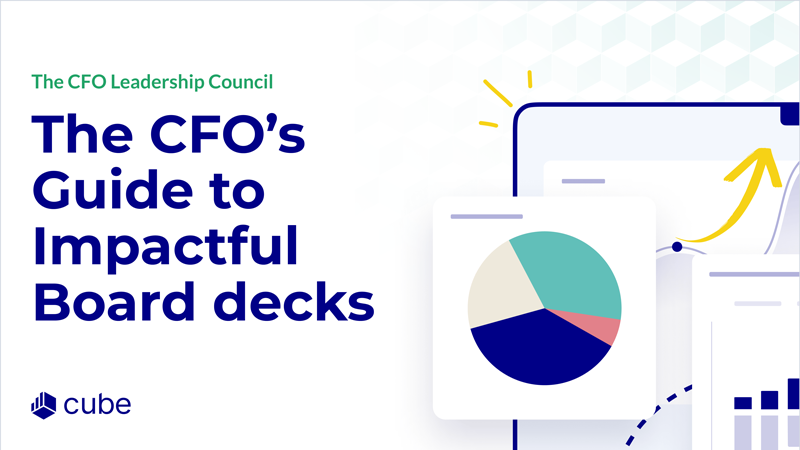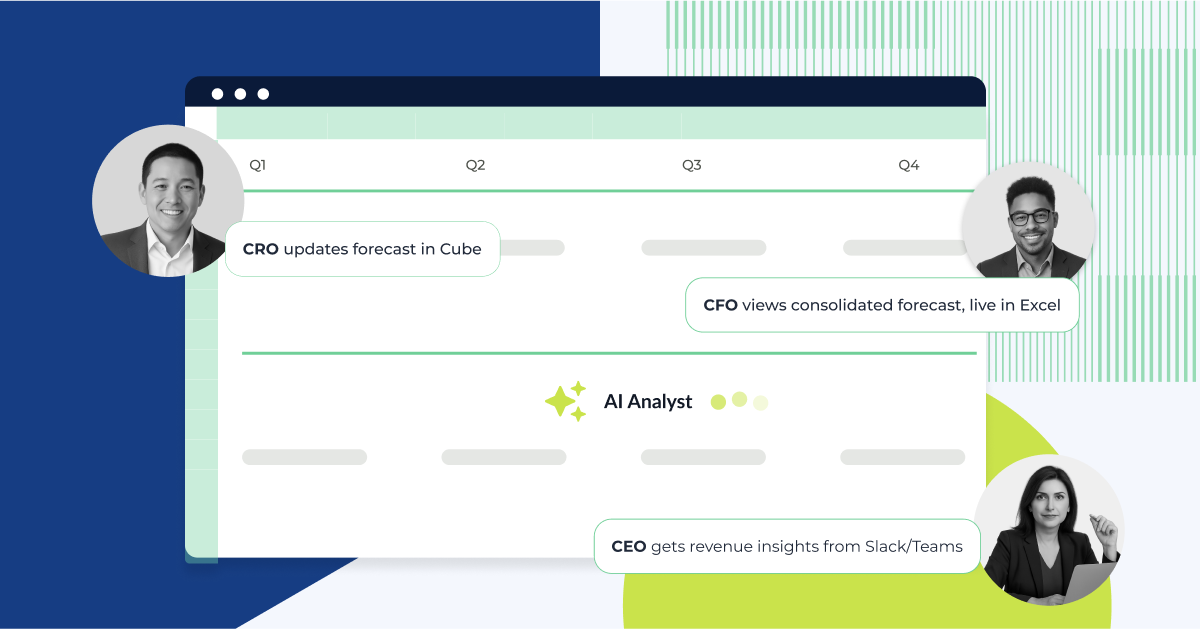The evolution of FP&A
Over the past few decades, FP&A has witnessed a transformative shift. What once focused primarily on budgeting, forecasting, and variance analysis has evolved into a more strategic and influential role within the business.
In the early days, FP&A's tasks were primarily manual, rooted in spreadsheets and basic financial software. Professionals would spend the bulk of their time gathering data, leaving little room for analysis. The narrative was simple and often reactive, centered on historical data and short-term projections.
Advanced analytical tools, automation capabilities, and data visualization software have elevated the FP&A function from a back-office role to a strategic partner in business decisions. Today's FP&A professionals are expected to provide insights, identify trends, and forecast potential scenarios, often with a forward-looking, long-term perspective.
However, with this evolution comes a new set of challenges:
- Data overload: While technology provides access to vast amounts of data, sifting through this information to find meaningful insights can be daunting. FP&A professionals are tasked with discerning which data is relevant and how to interpret it effectively.
- Integrating multiple data sources: As businesses grow and diversify, the data they generate comes from an increasing number of sources. Integrating this data into a cohesive and comprehensive analysis is a difficult, time-consuming task.
- Increasing expectations: The role of FP&A has expanded to include strategic advisory. This means professionals are expected to provide actionable insights and recommendations, often with less time and more data than ever before.
- Navigating uncertainty: The business environment is ever-changing. Political, economic, and social uncertainties, as well as market dynamics, can dramatically affect forecasts. FP&A professionals must be agile, adapting their strategies and analyses in real time.
The need for tools that can provide clarity and enhance the strategic role of FP&A has never been greater. As we dive deeper into the capabilities of FP&A software, we'll uncover how it addresses these challenges and ensures FP&A leaders aren't just surviving—but thriving.

Strategic advantages of FP&A software
Traditional tools have been the backbone of financial planning for years. However, as the pace and complexity of business accelerate, their boundaries become evident. FP&A software isn’t just a newer option—it's a game-changer.
Here are a few reasons why it's critical for finance leaders to make this transition and how it can redefine their strategic approach:
Greater depth of insight
While manual analysis has its merits, it can be likened to searching a dark room with just a flashlight. You might spot a few things directly in the beam's path, but there's so much more left in the shadows. Sophisticated FP&A software, on the other hand, is like flipping on an overhead light, revealing details and corners that were previously hidden.
Take, for example, a company evaluating its sales data. Using manual methods, they might see a spike in sales every December. But with FP&A software, it becomes clear that not only do sales spike, but returns also increase in January, or a particular product line consistently outperforms during these peaks. This kind of comprehensive analysis paints a fuller picture, helping businesses understand not just the “what”, but also the “why” and “how”.
The danger in relying too heavily on manual methods is that you can find yourself only responding to immediate challenges, instead of proactively preparing for future trends. By highlighting patterns and uncovering subtle anomalies, FP&A software offers a more holistic view, ensuring companies are better equipped to make well-informed decisions.
Scalable and dynamic forecasting
Remember the last time you were deep into an Excel forecast and wished you could instantly tweak a few numbers and see the ripple effect without redoing everything? That’s the limitation of traditional forecasting tools; they don’t leave much room for quick changes.
Modern FP&A software, on the other hand, empowers you to forecast in a way that’s nimble. It allows you to make quick adjustments during sudden market shifts or unexpected company changes without having to rebuild the entire forecast.
Seamless collaborative planning
When departments in businesses operate independently, it's tough to craft a unified strategy. FP&A software bridges this gap, allowing departments to contribute to a central plan and align their objectives.
Imagine strategy development as a group project. Instead of finance setting a separate budget and marketing later finding it doesn't match their goals, both teams collaborate from the start on the same platform. They can see and adapt plans in real time, ensuring every decision benefits the whole company.
And the collaboration doesn't stop at planning. For instance, if the sales team detects a market shift, they can quickly share this insight with the finance team on the same platform. This immediate communication means strategies can adjust on the fly, resulting in a more agile and unified business approach.
Elevated risk management and mitigation strategies
Risks in finance are inevitable, but they don't have to be devastating. With FP&A software, these uncertainties become more like puzzles waiting to be solved.
Early detection is a game-changer. Instead of being blindsided by unforeseen challenges, FP&A tools spot potential setbacks ahead of time. This early warning system means teams can adjust strategies, preventing small issues from becoming major crises.
Plus, the software doesn't just help identify risks; it prepares teams for them. You can play out various market scenarios, crafting plans that are resilient in both prosperous and challenging times.
Integration with other business functions
Think of FP&A software as the nerve center of your business, connecting the dots across departments. By integrating with systems like CRM and HRIS, you're making it easy for different parts of your business to easily share information with each other.
Pairing FP&A insights with your CRM, for instance, provides a dynamic understanding of customer behavior. This isn't merely data—it's a constantly updating narrative, hinting at potential market trends and shifts. On the other hand, integration with HRIS offers a deep dive into employee trends, staffing costs, and organizational dynamics. This can be invaluable when anticipating the financial implications of new hiring initiatives or changing workforce morale.
Ultimately, it's about crafting a strategy that encompasses more than just numbers. It's a holistic view, a storyline that touches on every vital aspect of your business.
How to use FP&A software to enhance strategic planning
Incorporating FP&A software into your strategic planning process can elevate your decision-making and drive organizational success. Here's a practical step-by-step guide to effectively harness these tools:
1. Define clear strategic objectives
Without well-defined objectives, your strategic planning efforts may lack focus and direction. So before diving in, start by setting SMART goals to determine what you aim to achieve with the help of FP&A software.
SMART objectives ensure that your goals are:
- Specific: Clearly defined and unambiguous, leaving no room for misinterpretation.
- Measurable: Equipped with metrics and indicators to track progress and success.
- Achievable: Realistic and attainable given your organization's resources and constraints.
- Relevant: Aligned with your organization's mission and strategic priorities.
- Time-bound: Set within a specific timeframe, providing a sense of urgency and focus.
Here’s an example of a SMART strategic objective for FP&A software integration:
"Enhance forecasting accuracy by 15% within the next fiscal year through the integration of FP&A software."
Clear objectives like the one above provide a roadmap for your FP&A software integration, helping you stay on course and measure your progress toward achieving your strategic goals.
2. Integrate data for informed decisions
To leverage your FP&A software for strategic planning, ensure it seamlessly combines data from various organizational sources, such as sales, marketing, and operations. This data integration provides a comprehensive view of your information, forming the foundation for well-informed strategic decisions.
For example, your FP&A software can merge sales data, customer feedback, and production costs, uncovering critical insights that might remain hidden. These insights can inform decisions such as optimizing production processes or adjusting product offerings to match customer preferences.
3. Simulate strategic scenarios
With scenario modeling capabilities, FP&A software allows you to create a virtual sandbox for strategic experimentation. It's like having a crystal ball that shows you potential outcomes before you take the plunge.
Let's say you're considering entering a new market. Instead of relying solely on historical data and intuition, you can simulate various scenarios with FP&A software. Explore the financial implications of different market conditions, such as aggressive competition, economic downturns, or unexpected regulatory changes.
Through these simulations, you gain invaluable insights into the potential risks and rewards associated with each strategic option. This allows you to make informed, data-driven decisions and craft an adaptable strategy that accounts for various contingencies.
4. Continuously optimize strategies
Strategic planning is not a one-time event but an ongoing process. Your FP&A software offers a valuable feature: reporting and analytics. After implementing your strategies, continuously monitor real-world results against your initial forecasts and plans using these features.
For example, if you're launching a new product, closely track its sales performance over time. Utilize your FP&A software's reporting tools to compare projected sales figures with actual sales data. Analyze trends, identify deviations from forecasts, and pinpoint any unexpected shifts in customer behavior. This dynamic approach allows you to adapt and optimize your marketing and sales strategies as market conditions evolve.
By leveraging the reporting and analytics capabilities of your FP&A software, you create a feedback loop that empowers you to fine-tune your strategies based on real-world data and market dynamics. This ensures that your strategic planning remains agile and aligned with your organization's objectives.
5. Communicate strategy effectively
Strategic planning involves collaboration among teams with varying expertise. The board, department heads, and team leaders may not have a finance background, making it essential to present financial information in a way that's easily digestible. When everyone comprehends the financial aspects of the strategy, they can align their efforts more effectively.
With FP&A software, you can use data visualization tools to transform complex financial data into visually engaging dashboards and reports. These visual representations simplify financial information, making it accessible to a broader audience.
For example, you can create interactive dashboards that display key performance indicators (KPIs) relevant to your strategic objectives. These dashboards offer real-time insights and trends, making it easier for non-financial stakeholders to grasp the financial health of the organization and its strategic progress at a glance.
6. Monitor KPIs
Identify the KPIs that are critical for measuring the success of your strategic initiatives and configure your FP&A software to track these KPIs continuously.
For example, if you're focused on expanding market share, monitor metrics like market penetration rate, customer acquisition cost, and customer retention rate. Real-time tracking ensures you stay on top of your strategic progress and can make timely adjustments.
Conclusion: it's all about the strategy
Incorporating FP&A software into your strategic planning process can enhance your decision-making capabilities, drive organizational success, and keep you ahead in the ever-evolving business landscape. Taking advantage of these tips and following the steps above ensures you're on the right track.
Want to learn how Cube can help you on this journey? Request a free demo today.



.png)









.png)

-1.png)




%20(1).png)